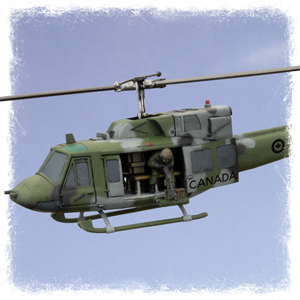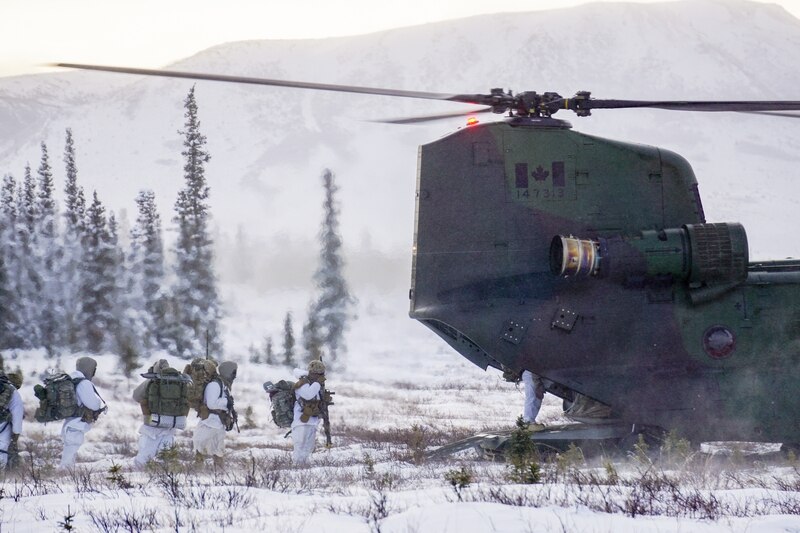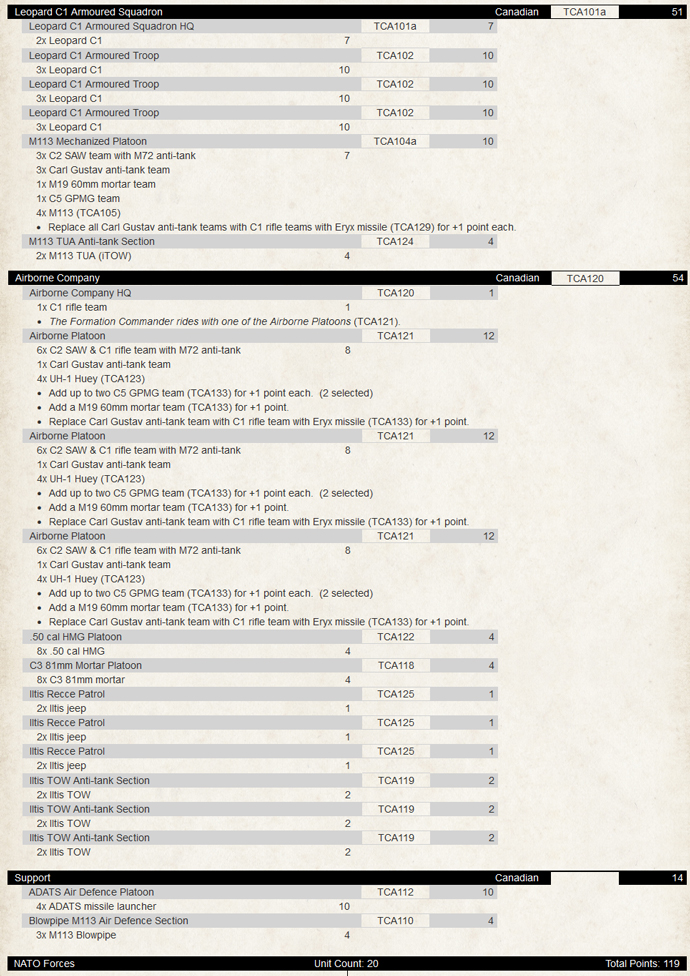|
|
 |
|
|
Canadian Airborne Forces
 |
Canadian Airborne Forces
By Jacob Hopkins
With the release of WW3 Nato Forces, comes the exciting inclusion of several new options for the Canadians. In this article I am going to take a look at the history of the Canadian airborne regiment, and an exciting list for its use in both attack and defense.
The history of the Canadian Airborne Regiment is a story of elite training, daring operations, and ultimately, a controversial dissolution. Spanning from its inception in the early 1960s to its disbandment in the 1990s, this unit stood as a testament to Canada's commitment to excellence in its armed forces.
|
| The Canadian Airborne Regiment was officially established on April 8, 1968, as a specialized unit within the Canadian Armed Forces. It was envisioned as a highly trained and rapid-response force capable of conducting a wide range of operations, including airborne assaults, counter-terrorism missions, and special operations. The backbone of the airborne regiment was its rigorous selection process and training regimen. Candidates had to meet high physical and mental standards to even be considered for the unit. Once selected, they underwent an intensive training program that included: |
- Basic Parachute Training: All members of the regiment were trained in airborne operations. This included learning to jump from various altitudes, often in challenging conditions, and mastering parachute landings.
- Small Unit Tactics: The regiment placed a strong emphasis on small unit tactics. Soldiers were trained in a variety of combat techniques, including close-quarters battle, marksmanship, and reconnaissance.
- Counter-Terrorism Training: Given the era's global terrorist threats, the regiment focused on counter-terrorism operations. Soldiers were trained in hostage rescue, urban combat, and handling explosive devices.
- Physical Fitness: Physical conditioning was paramount. Members of the regiment were expected to maintain a high level of fitness to endure the demands of their operations.
- Language Proficiency: Bilingualism was encouraged, as the regiment needed to operate effectively in both English and French-speaking regions.
|
 |
| This intense training, coupled with stringent recruitment guidelines, resulted in the creation of an expertly trained and highly motivated unit with a unique sense of regimental pride. This would ultimately lead to the units downfall and disbandment in the 90s due to a frightful incident members of the unit were involved in. But that’s a story for a different article, so lets dive into the rules side of things! |
| The Canadian Airborne company is a solid infantry formation, with the customary HQ, 3 Airborne platoons, and several supporting infantry and light vehicle units. The infantry in the formation come in with courage 4+ and skill 3+, while assault and counterattack ratings are a 4+. At full strength you get 6 C2 SAW and C1 Rifle teams with the usual M72s and a single Carl Gustav tea, transported in 4 Hueys. You can further upgrade the unit with up to 2 C5 GPMGs and a 60mm mortar. And lastly you can replace the Carl G with a new Eryx Missile team. The Eryx features an amazing AT 24 and firepower 4+, ranging out to 16’ with Tandem warhead and Thermal imaging. More than worth the cost of losing the ability to fight in close combat. |
 |
| For support, the airborne company can pack up to 8 81mm man packed mortars into a single squad, transport by a single huey per 2 mortars. While the C3 81mm may not have high anti tank, its ability to lay down smoke or saturate a point to pin the enemy infantry coupled with the survivability of a 3+ infantry save will be a potent tool. If you are more interested in big machine guns, the .50 cal HMG platoon will suit your taste. Up to 8 man packed .50 cal guns will fulfill all your anti infantry needs. |
|
Lastly, the company can have up to 3 ILTIS recce platoons and 3 Iltis TOW At sections. Both Iltis sections feature a pair of the Canadian made Iltis light utility vehicle. The TOW sections comes with, rather unsurprisingly, an iTOW mounted to each for at 21 on a 4+ save unarmoured tank unit. While the Recce section packs each jeep with a 7.62mm MG but gives you the all important Scout and Spearhead into your force.
So putting this into a list for me would look something like this.
|
 |
|
The core of the force on the defensive is the airborne company. Three large blocks of tough and determined infantry backed up with a large battery of mortars and heavy machine guns can dig in on your objectives and weather the coming assault. Clever placement of the ADATs, Tuas and Iltis TOW sections will blunt the Warsaw assault while you wait for your Leopard squadron to arrive and tear up the flank. On the Attack, The Leopard squadron can provide the initial thrust, backed up by the high power of the ADATs and large number of Tow shots you will have. Meanwhile your Airborne units wait to fly in and land close to the enemies objectives in order to leverage their high number of well trained and motivated troops to blitz the enemy of the point. In both situations the extra troops and Eryx launchers of the M113 Mech platoon can be used in a variety of ways, entirely up to you. While your Iltis recce section can be used for decent infantry harassment with their machine guns.
Remember, were pulling for you, so keep your sticks on the ice!
~Jacob, Lack of Foresight Gaming
|
|
|
|